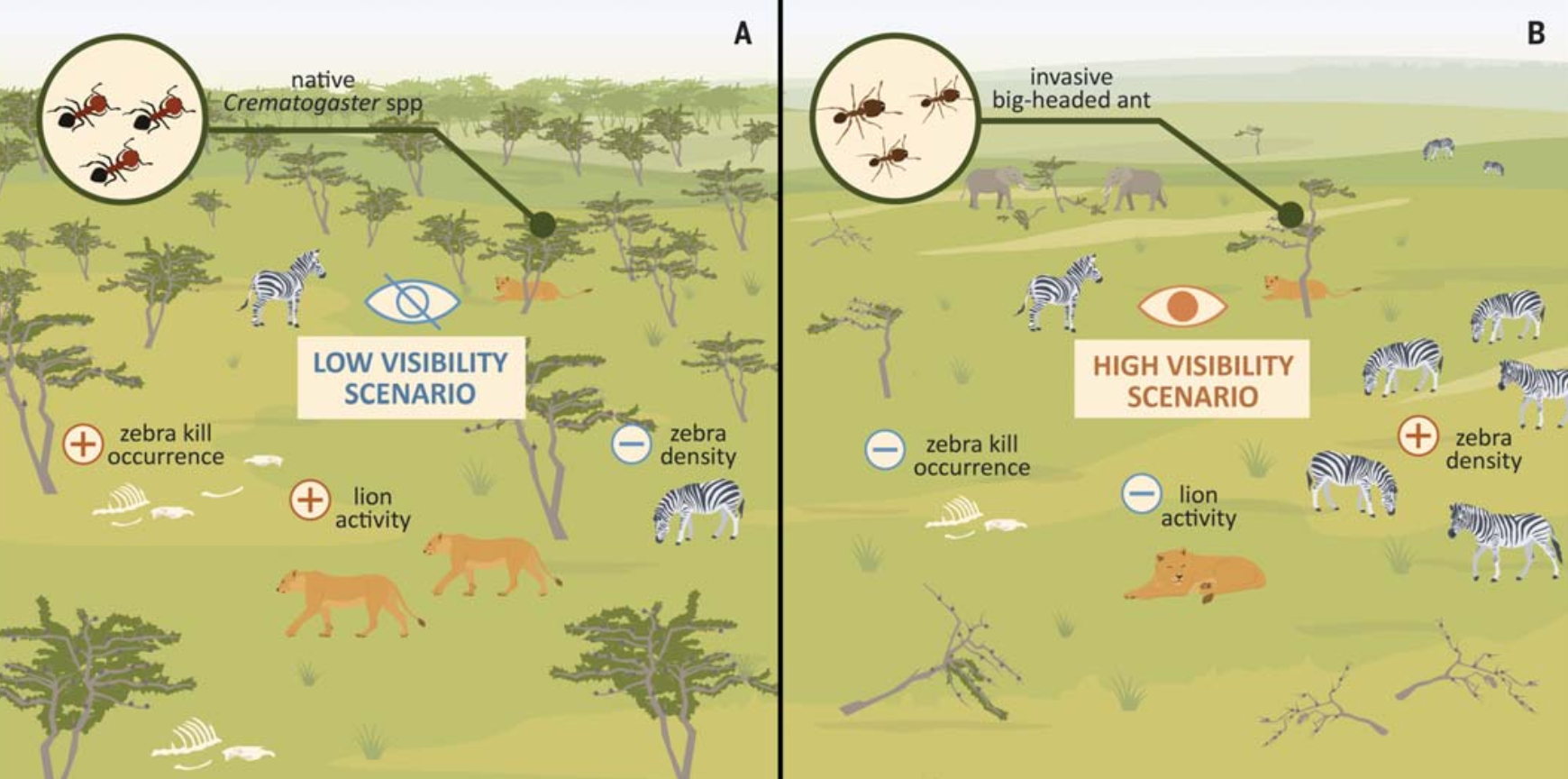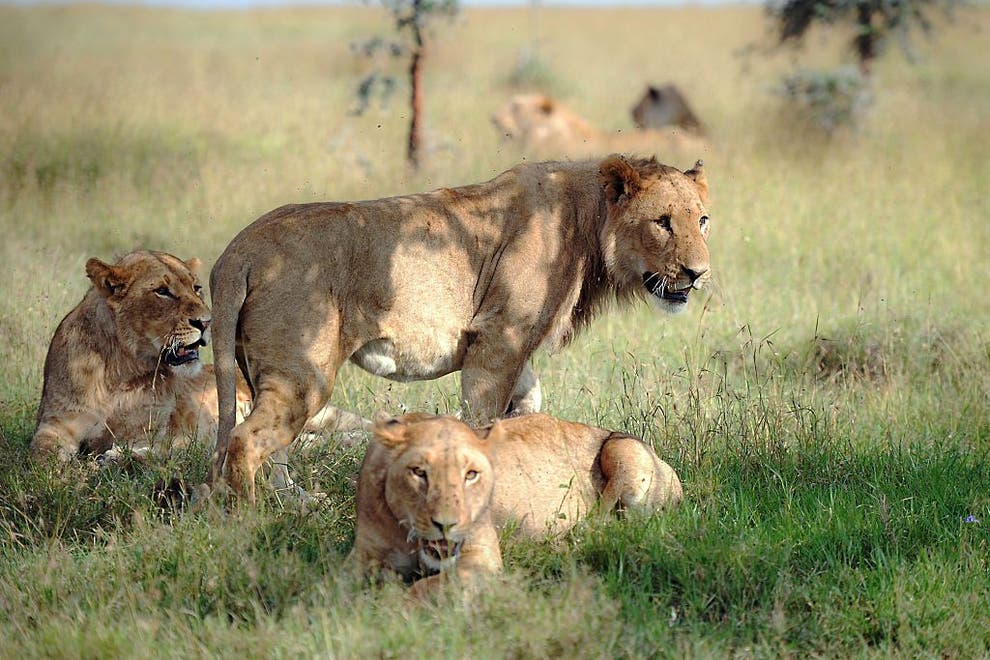An army of invasive ants has wreaked so much havoc on the Kenyan ecosystem that it has changed the hunting habits of a pride of lions.
The big-headed ant, which originated on the island of Mauritius, is one of the world’s most invasive insects, with colonies found in 1600 locations from East Africa to the southern states of the USA.
- James Webb has solved the mystery of deep space! Why does that light appear?
- NASA’s Mars helicopter Ingenuity makes final flight after rotor damage
According to a 2014 study, in warmer climates the arrival of these ants “almost certainly spells doom” for native insects, using their disproportionately large heads to attack other ants and tear apart their prey.
The University of Wyoming study, published on Thursday, revealed the impact of their arrival at Ol Pejeta, a wildlife sanctuary in Kenya’s Laikipia County.
The big-headed ants disrupted the symbiotic relationship between the region’s native acacia ants and Vachellia drepanolobium (a species of acacia).

These trees, the dominant species in much of East Africa, provide nectar and shelter for native ants. In return, the ants defend the trees by emitting formic acid and biting herbivores that try to feast on them. This is a particularly effective strategy against elephants.
But when the big-headed ants settle in this area, they not only kill the native ants, but also fail to protect Vachellia drepanolobium.
This causes elephants to overexploit trees and cause them to be trampled and broken “at a rate 5 to 7 times higher in areas with invasive ants than in areas without invasives”.
Without trees, the land is mostly bare, leaving lions with few places to hide as they pursue their preferred prey – zebras.
The study found that lions were almost three times more likely to kill zebras in areas not infested by big-headed ants.
Although the lion population did not decline after the insect infestation, this was not good news for the African buffalo. With fewer opportunities to hunt zebras, lions have turned their attention to the larger and harder-to-kill species.
Researchers found that in the last 20 years, the proportion of zebras killed by lions has dropped from 67 percent to 42 percent in the region, while the number of buffalo killed has increased from 0 percent to 42 percent.
“We show that a small invader reshapes predator-prey dynamics between iconic species,” wrote the researchers, led by Douglas Kamaru, a PhD student in the Department of Zoology and Physiology at the University of Wyoming.
Scientists hypothesized that the ants could change the dynamics of lion pride dynamics in Ol Pejeta, but noted that the long-term consequences cannot be known as the invasion of large-headed ants is ongoing.
https://www.independent.co.uk/climate-change/news/kenya-lions-savanna-zebras-ant-b2483394.html

